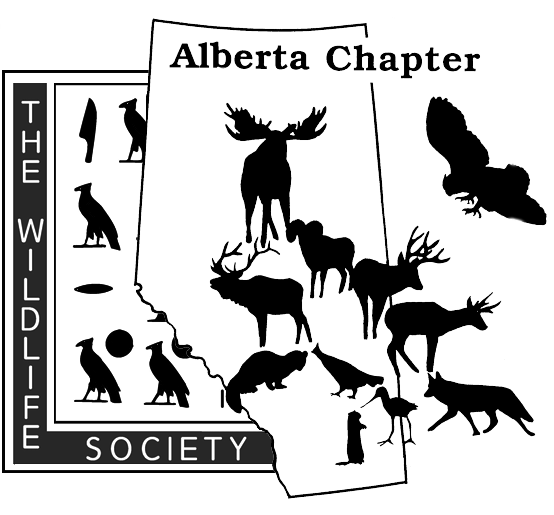The complexity of conservation research and issues in Alberta require creativity and innovative problem solving; the more people from diverse backgrounds we have working on these issues, the more likely we are to define new and effective solutions. In this web series, the ACTWS is celebrating the diversity of Alberta wildlife professionals.
If you’re a wildlife student or professional with a story to share — whether it’s about your background, career path, or lived experience — we’d love to feature you in this series. Your story might just inspire someone else in this field.
Email us at execdirector@actws.ca to get started.
Let’s keep building a community where every voice matters.
Meet Remington Bracher
Tanisi, I write to you today with an open heart and handshake. I am a Nêhiyaw (Cree) member of Muskoday First Nation, wildlife biologist, hunter, angler, trapper, and current graduate student. I was born in Edmonton and raised across Alberta’s beautiful and diverse natural landscapes. However, growing up away from the influence of my Indigenous community of Muskoday near Prince Albert, Saskatchewan, I was disconnected from the language, stories, practices, and ceremonies that should have anchored me to my identity. This is in large part due to the intergenerational trauma associated with Canada’s colonial history, such as residential schools. While my grandmother was the last one in our family to attend these schools, the abuse related to her experiences there caused her to distance herself from her culture and thus further separated our family from it as well. This story is not unique for Indigenous individuals and communities as every single Indigenous person you know is a descendant of a survivor of a residential school, be it their mother, father, grandparents, great grandparents, or themselves.
For much of my life, I didn’t know what it meant to be Indigenous, let alone Cree. I held a status card, but not the teachings. Instead, I found meaning in the forests, rivers, and grasslands—through every set of tracks, each whisper of wings overhead, and splash in the stream. The land became my first teacher, wildlife my kin. My story began to take shape not in a classroom but under the watchful eyes of teachers such as moose, deer, and elk, and in the presence and support of my mother and father—each a guide pulling me closer to the path that made me who I am today. Little did I know at the time, but hunting, fishing, and trapping were my first forms of research and conservation, as well as my first ceremonies. Later in life, I found my way back to community and culture through these activities. I realized that the knowledge I learned from the land mirrored the values passed down through generations: respect, reciprocity, and responsibility are key to living in a good way. These relationships became foundational to me in reclaiming and reforming the cultural linkages for future generations of my peyakôskân (family) so that my future family will not face the same identity crises that I did.
As an Indigenous professional in wildlife conservation, I carry the stories of disconnection and return. I walk alongside youth who are finding their way back, just as I did. Land-based activities, such as hunting, helped me reconnect with my culture, and I hope that others find similar pathways. That is what inspired me to develop the ACTWS Postsecondary Hunting Mentorship Program, with the goal of creating an Indigenous branch that helps others connect with the land, their culture, and identity, ultimately fostering a sense of community. In 2022, I also took on the role of Coordinator for The Wildlife Society’s Native Student Professional Development Program. This opportunity allows me to support and uplift other Indigenous students navigating similar journeys. The program creates space for Indigenous voices in wildlife science, ensuring that we are not only included but also empowered to make changes through our work. Through mentorship, community building, and professional development, I aim to help the next generation of Indigenous conservation leaders navigate both worlds with confidence, grounded in their culture, and equipped with the tools to influence wildlife policy and practice. In this field, our diversity is not something to accommodate—it is something to celebrate and work towards. It brings a more nuanced perspective to our work and an inclusive vision of our stewardship goals. I now realize that my work in wildlife science is not separate from my culture but rather an extension of it.
For me and my story, diversity is the path walked between two worlds: one of traditional knowledge and the other of Western science. I continue on this path with intention, not just to conserve ecosystems, but to restore and renew relationships with wildlife, the land, and with one another. Hiy Hiy.



